He loved electronics. That’s where he wanted to work. He thought he was pretty good at tinkering with gadgets, and he had an associate degree in electronics. Iowa, his home, didn’t have much of a future for him. But Colorado? He squinted through the powerful sun, which burned his pale skin, out to the behemoths in the distance with snow on their caps. He had an older sister here. He’d even already picked out a house across the street from the campus so he could walk to work. HP was all about electronics. Yeah, he could live here.
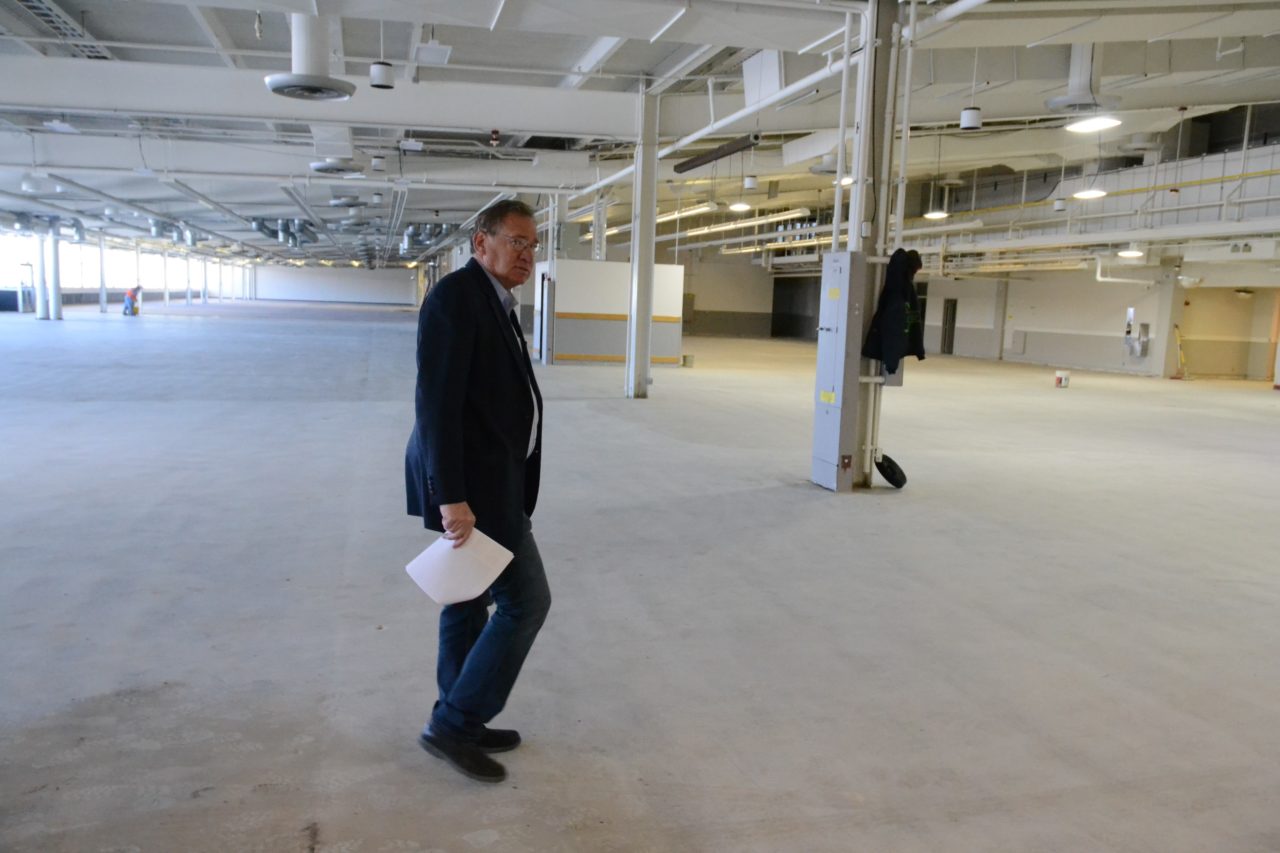
“I’m sorry, son,” she said, “We aren’t taking resumes right now.” The story still makes Dokter laugh a bit, even if it’s a bit rehearsed by now, and not because of his naïveté. He laughs at the irony of where he is now, sitting in a meeting room a few steps from that same desk, in that same lobby. HP is gone. Now, it’s his turn.
More specifically, Dokter, along with Dan Kamrath, leads a Loveland business group that purchased the Rocky Mountain Center for Innovation and Technology for $15.5 million. Dokter has another name for it now: The Forge Campus.
Cumberland & Western Resources bought the place in 2011. Dokter is friends with them. “Good guys,” he says about them. But many believe Dokter’s group is much better equipped to carry out the vision Loveland had in mind when the city bought it for $5 million from Agilent, a spinoff of HP. Indeed, Dokter and Kamrath are local, two of Loveland’s business and technology champions who rate high on the Richter scale in terms of movers and shakers. That alone means a lot.
“They were good partners, but they didn’t market it,” says Kelly Jones, Loveland’s economic development director, of Cumberland and Western Resources. “They wanted us to market it, and we market everywhere, not just one building. [Dokter’s group’s] vision is similar to what it was meant to be years ago.”
Dokter is eager to get started. He 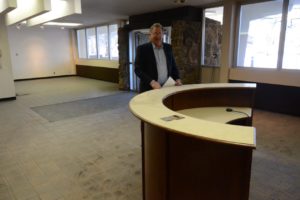 calls himself the visionary, only without the ego that implies. Kamrath handles the finances, a guy who can look at a project and tell Dokter “in five nanoseconds” if it will make money. Dokter considers business more than a job. He calls building and growing companies his only real hobby. He’s launched many successful start-ups in electronics, manufacturing, software, retail distribution and, yes, food service, as he once managed Pizza Ranch. He is president of the Loveland Business Partnership board.
calls himself the visionary, only without the ego that implies. Kamrath handles the finances, a guy who can look at a project and tell Dokter “in five nanoseconds” if it will make money. Dokter considers business more than a job. He calls building and growing companies his only real hobby. He’s launched many successful start-ups in electronics, manufacturing, software, retail distribution and, yes, food service, as he once managed Pizza Ranch. He is president of the Loveland Business Partnership board.
“We don’t play golf,” Dokter says. “I’m a lousy Sunday school teacher. I can give back this way.”
Before he makes himself sound like Santa, he admits, right away, that when he walks through the massive, 811,000-square-foot campus, which feels more like a community college than a place to work, it’s not for a stroll down memory lane. The bones are amazing, he says, and they got a good price for it. They should make money off it: Dokter says they don’t even need the campus to be full to be profitable.
But it’s also true that money is not the only objective. He and Kamrath founded The Warehouse, which supports and coaches innovative companies, not start-ups, with the idea to see if they can turn, say, a half-million in sales into $20 million.
“This completes the ecosystem for us,” Dokter says. “We have a mindset of growing companies. We aren’t a landlord. We are a partner. That’s a different mindset than we want the rent on the first of the month. We want that, too, but we also want to see them grow. That’s what we offer, and it’s a different approach. I hope we can attract companies with that.”
Dokter’s motivation for this is to feed his passion, not to show HP they were wrong in rejecting him. In fact, it’s quite the opposite. He relishes the history. The city, with one traffic light to its name back in the late 1950s, bought the land with $100,000 raised by small donations, bake sales and kids’ lemonade stands that were matched by Loveland First National Bank with the idea of attracting HP to Loveland. HP shocked Boulder and chose Loveland, and that’s how the campus came to be.
There’s a tree out front of the lobby that was planted by Bill Hewlett and Dave Packard themselves. He hopes to preserve that in some way. He also wants to build a museum to innovation that will detail some of HP’s accomplishments with Loveland. Former workers in the company have contacted him asking how they can help. “There’s tremendous ownership that this town has of this place,” Dokter says. “We welcome that. HP had a good run. A heck of a run.”
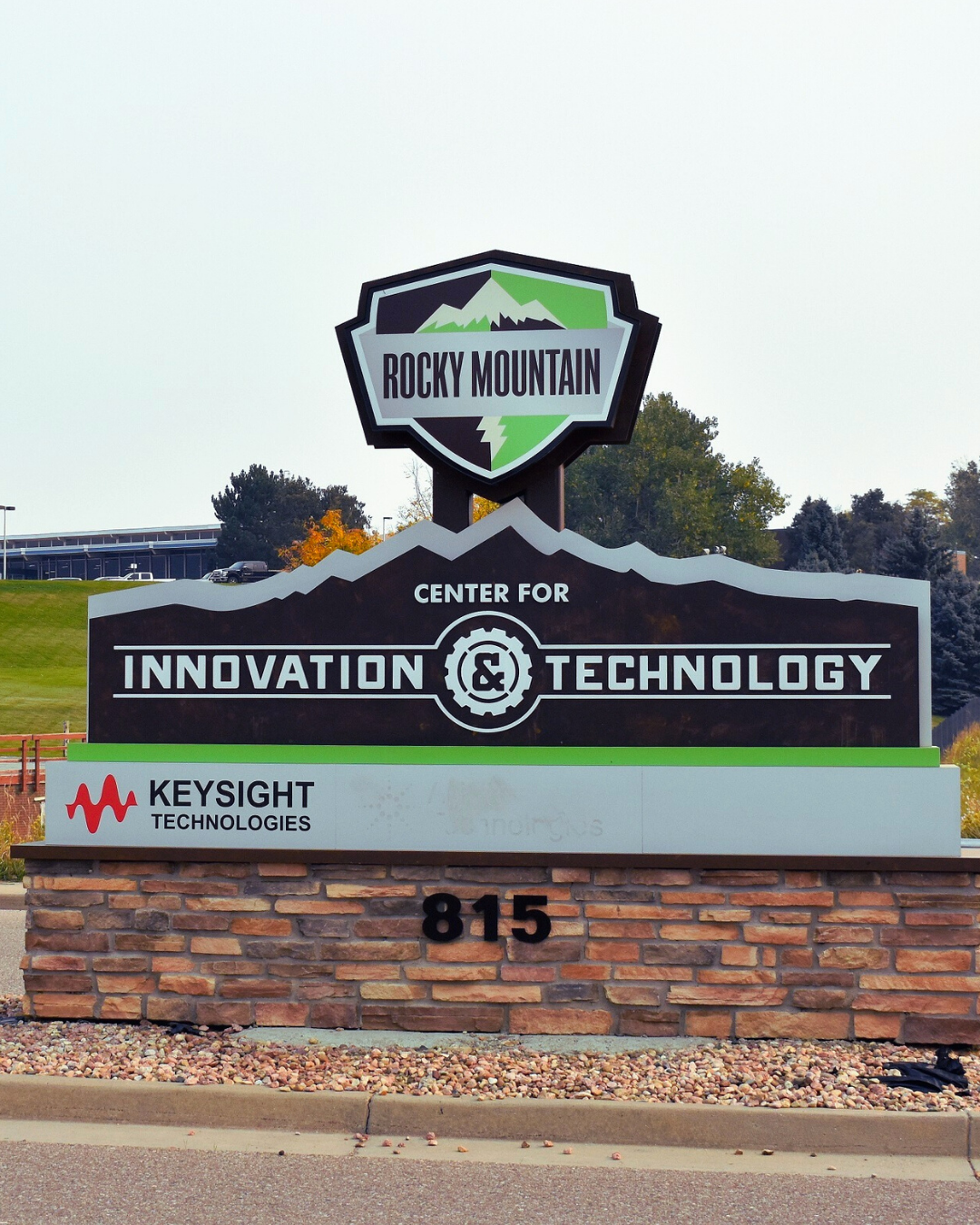
Fair warning: If Dokter wants to show you around the place, “just a really quick tour,” it won’t be just a really quick tour. When he heard the campus was on the market, he and Kamrath put together a group of a dozen or so investors and a deal in less than two months. He’s pumped, even emotional, about the place.

The largest company, Lightning eMotors, added 100,000 sq. ft. of space to its operations in January and now uses more than 230,000 sq. ft. The company provides electric vehicles for fleets and plans to produce 3,000 vehicles next year by doubling its workforce this year. It will also merge with GigCapital3 Inc. and go public the first half of this year. The company said its workers were too busy to talk for this article. Good for them.
Dokter, as the vision guy, already sees a lot in the empty rooms, deep bowels and long corridors. I see a laser tag course. He sees a microbrew a year or two from now that could serve new recipes on the porch outside on a Friday afternoon.
He sees partnerships with Loveland’s school districts and perhaps a tech college to fill the 20 meeting rooms that surround the former call center. He sees offices with windows so people can see what the other companies are working on, which he finds inspiring, although he also says privacy is an option to protect intellectual property. He also sees a workout facility with aerobics and spin classes and other amenities, but he believes the most important part is the cafeteria.

Without a place like a cafeteria, it would be easy for companies to stay insular, says Thomas Murphey, who founded Opterus Research and Development in 2015, a tenant of The Forge. “When you’re running your business,” Murphey says, “it does take effort to stop and poke your head around.”
He doesn’t think he’ll use the cafeteria. He has a wife who makes him lunch every day. “But we have a lot of young engineers who are single guys,” he says and laughs. “They don’t make their lunch. So that will be good.”
Murphey’s business is the perfect embodiment of Dokter’s vision. His company provides critical spacecraft components and structures, from conception to design and fabrication, all in the Loveland building. He housed his business at The Warehouse, which will now have a home a football field’s walk from his office, after moving to Colorado a couple years after he formed his company in his basement. His wife and lunch chef, Eryka, who graduated from Colorado State, told him they were moving to Colorado from New York. He was a graduate of the University of Colorado and agreed right away.
The Warehouse was crucial to his success, as he knew nothing about the business world and the many questions that owners must ask, including how to hire people, when to expand and how to sell a product. The Warehouse also helped get his company a huge advanced industries grant and state funding.
“My background was as a scientist, as a research guy for the Air Force,” Murphey says. “They just really held my hand and taught me how to make it into a business.” He’s since doubled in size every year for the last five years.
Still, the sale made him a little nervous, as things were going well, and change is always uncertain. But he also has confidence in the group. “As far as having a group of people buy it, that’s the best group possible,”
Dokter hopes to get the Warehouse going again soon. “We envision noise,” he says.
The group pulled out all the carpet down to the cement floor in Building C, its location, so heavy machines can move back and forth and in between modular offices. The clients, he says, will tell them how much square feet they need. They will be surrounded by coaches and tools and other businesses who Dokter hopes will help each other. He hopes to have as many as 20 companies working at once.
“This is what we call the valley of death,” Dokter says. “It’s not a startup. It’s stage two. Let’s see if you can scale it up.”
Rent can be month-to-month, he adds. “That way you aren’t making a huge commitment,” he says. “You can fail fast if you will fail.”
The group will kick off a capital campaign to raise nearly $5 million for the buildout of The Warehouse since it is a non-profit. His group, he says, donated nearly that much in space for it. Once that’s raised, Dokter believes the non-profit can sustain itself through the rent the companies pay to be there.
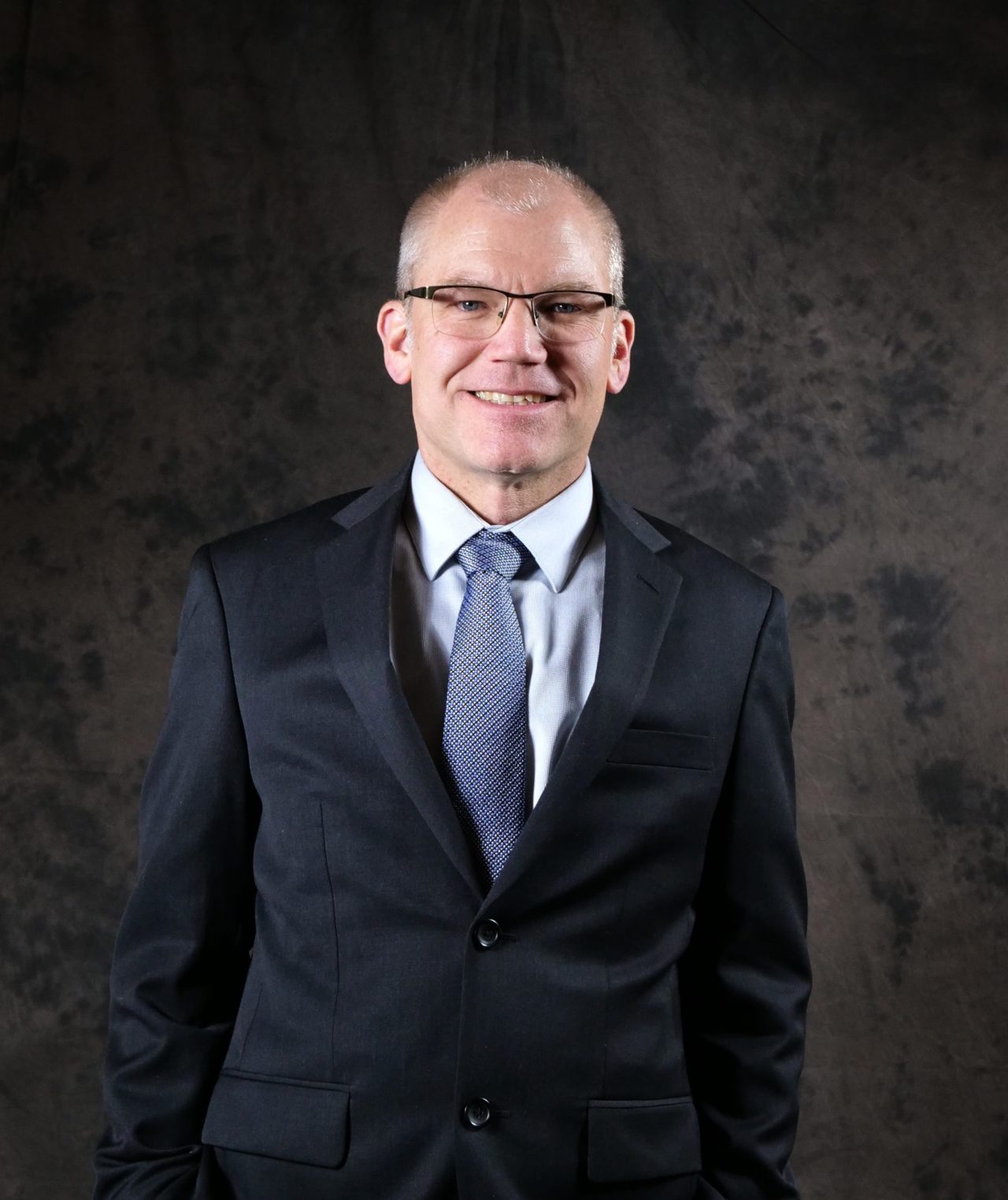
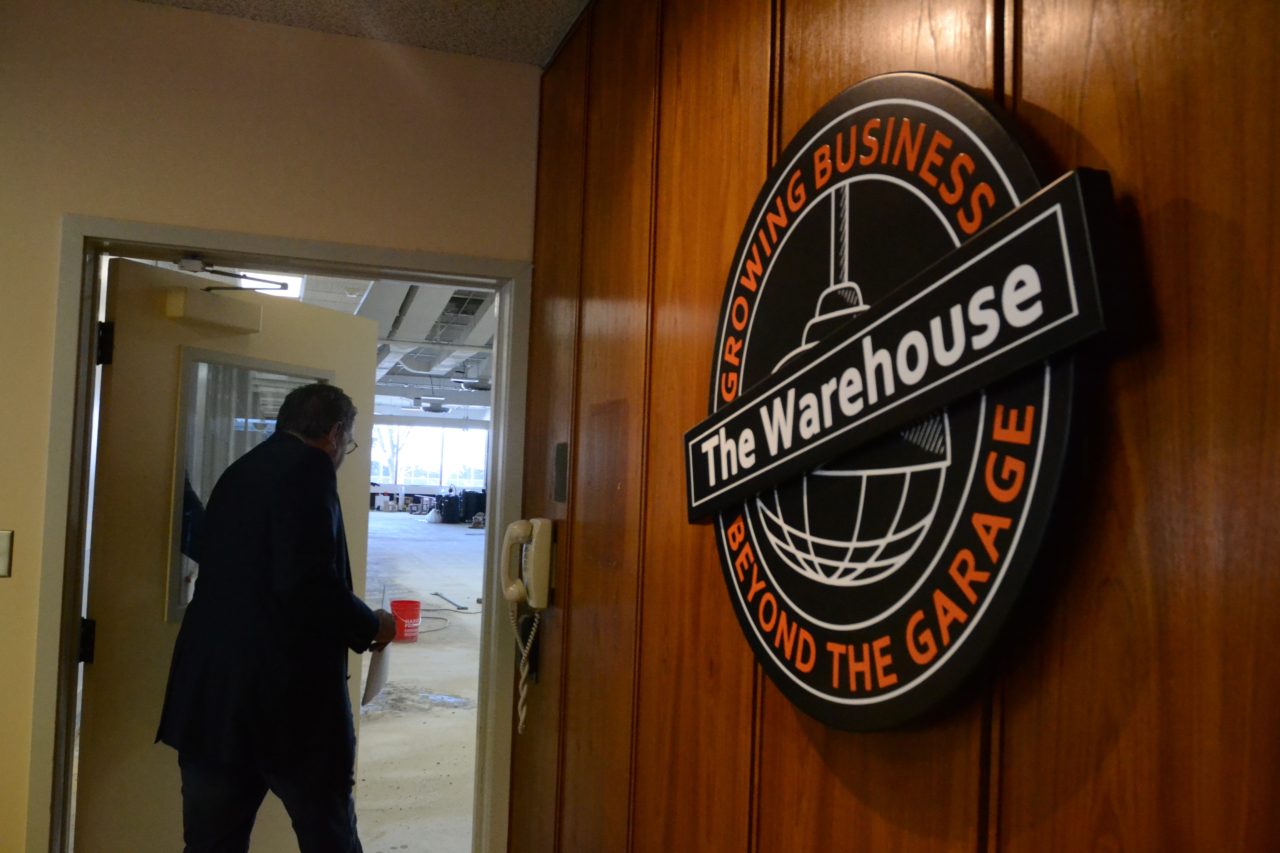
Dokter also hopes to collaborate with downtown with a workforce that dines and shops, and he could host events there. But he has more immediate plans: He wants to make the lobby where he first entered the HP campus in 1983 the main entrance again. Across the way, he plans to cut down the original, dying tree Hewlett and Packard planted and repurpose it into art for the lobby. And then, he plans to plant a new one to take its place.







